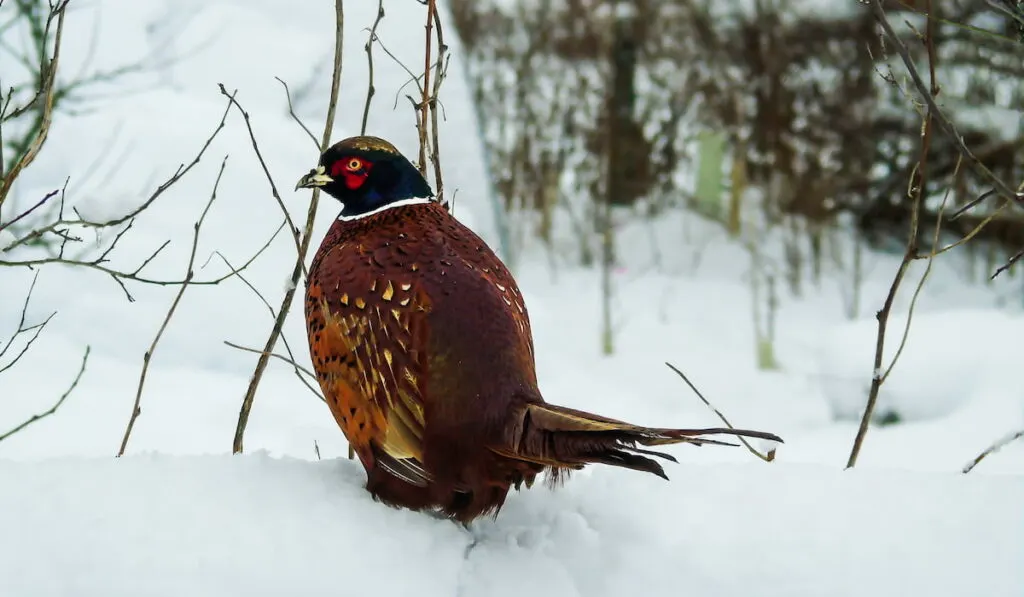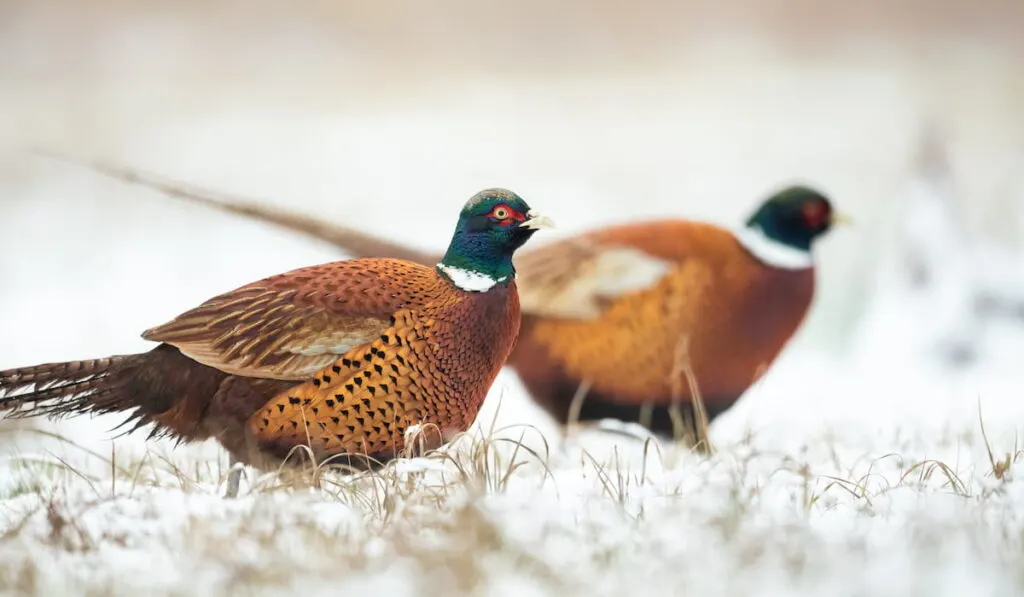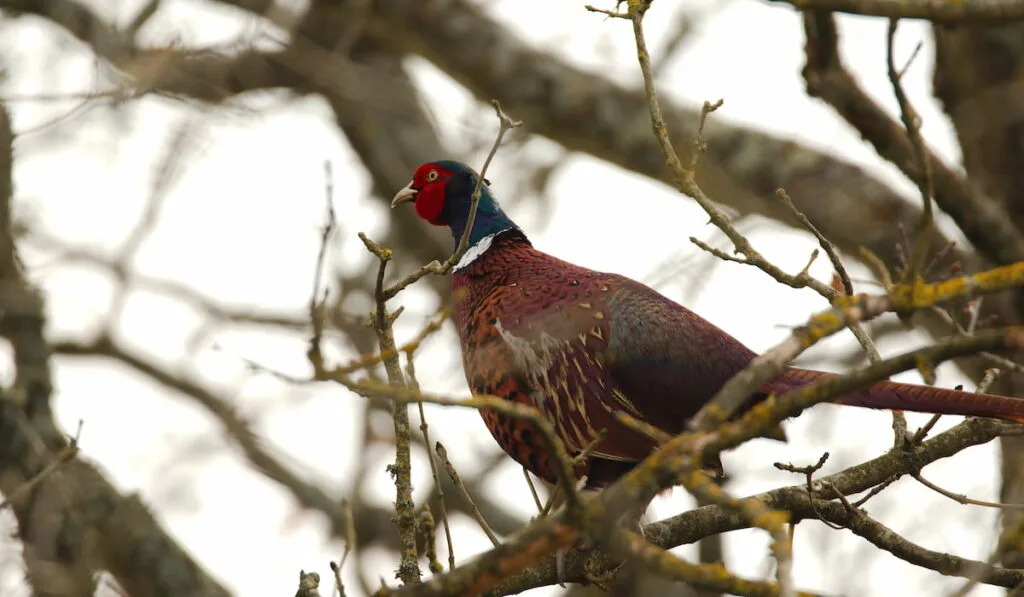When it’s warm outside, nature flourishes. Flowers bloom, insects crawl around, and more animals come out to play and explore. With so much going on during warmer times of the year, it’s easy to guess what pheasants are eating.
They’re munching on leaves, harvesting berries on available bushes, and love a good bug snack. Any insects like ticks, beetles, and even ants that are around will quickly be gobbled up by a pheasant in the area.
But what about when things get cold outside? What do pheasants eat in the winter?
Pheasants, in some climates, just keep on eating what they’ve always eaten. Even if things like insects or berries are hard to find, they will adjust their diets to eat more leaves and other foliage around them.

However, pheasants also thrive in very cold temperatures where there is usually snow on the ground. That makes it harder to find bugs crawling around on the ground, so they have to come up with new ways to find enough food to eat.
Read on for more information on what pheasants eat during winter and how they fill their tummies when things get hard outside.
Table of Contents
Their Diet Stays Pretty Much the Same
Pheasants will adjust the foods they look for when things get cold and snowy out. When there aren’t big, substantial leaves and berries available, they’ll turn to eat more roots, smaller leaves, and any winter fruits that they come across.
Of course, the odd bug is always a good treat for them, but they’ll consume fewer bugs because there simply aren’t as many around. They also are very good at finding seeds and love to eat as many of those as they can.
Pheasants Will Move to Where the Food Is
Another thing pheasants do is move to where there is more food available during colder temperatures. Pheasants aren’t migratory birds, so we aren’t talking long distances here.
However, pheasants love to hang around wet areas. Think lakes or streams where there will be more signs of life than in a field full of snow.
Pheasants will often make their way into taller grasses in wetlands to look for bugs that they love to eat.
You can typically find more pheasants in areas where there are tall cattails, for instance. This helps keep them out of the wind and gives them a better chance of finding good food sources.

They Slow Their Metabolisms
Like many animals, pheasants have an incredible ability to change what their body needs based on the weather outside.
Summer and fall are times when pheasants eat their fill as much as possible. They do this because there is more food available, and they’re preparing for winter when things are harder to find.
It’s normal to see pheasants drop a significant amount of weight during colder months. Their bodies are burning more energy to survive and there just isn’t as much food around.
However, they can go up to two weeks without eating in the winter and can change their energy usage to suit outdoor conditions.
They tend to be much more stationary when it’s cold, choosing instead to huddle together in tall grass to stay out of the wind and snow.
Pheasants Know Where the Farms Are
Even wild pheasants will know where farms are and where there are crops to be eaten. When looking for food, you can find pheasants on the prowl for any corn that’s fallen to the ground, leftover seeds, or bugs that tend to be in shoveled snow patches or other patches of land that are easy to get to.
If you’re on a farm or out in your yard, you can count on pheasants to quickly snatch up anything you drop on the ground on accident. They’ll also eat any weed seeds in your yard that you missed.

They May Go Up in the Trees
Pheasants are usually ground eaters. Most of their time is spent pecking the dirt and surveying for anything that moves. Grains, seeds, and any fruit that finds its way to the ground are also things they love to feed on.
When things get cold in the winter season, though, pheasants have been known to make their way up into the trees to look for leaves or bugs at higher elevations.
They will probably do this for shorter amounts of time, however, because they know that they are exposed to predators while they are up on tree branches.
The differences in how pheasants eat in the winter depend a great deal on just how cold things get.
When it’s not snowing outside, they’ll keep many of the same habits as they do during warmer months. There just won’t be as much food around, so they’ll spend more time looking with fewer results.
You won’t find them hanging around berry bushes as much because there won’t be any berries on the branches. Instead, they’ll be spending time moving through plowed fields looking for any leftover grains or vegetables that they can munch on.
These are hardy birds that do well in winter. As long as there is plenty of fresh water for them to drink and someplace that they can get out of the wind, they’ll likely do just fine.
When summer comes around again they will be ready to get out on the hunt for bugs and all of the other things that they love to eat.
Resources
- https://marsicarruthers.wordpress.com/pheasant/what-do-pheasants-eat/
- https://askinglot.com/what-do-pheasants-do-in-the-winter
